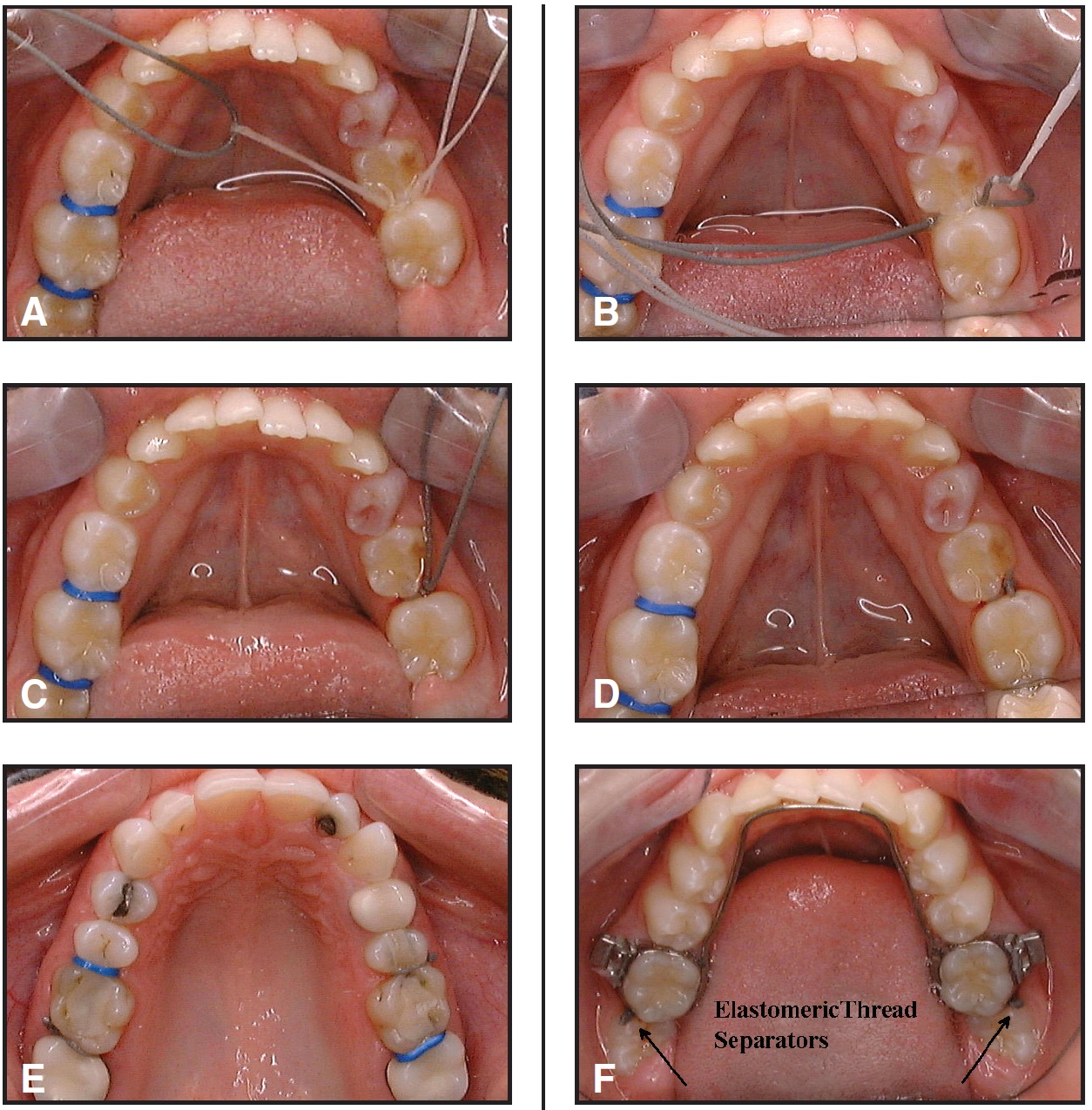Elastomeric separators can be difficult to place when a posterior tooth is partially erupted, submerged, or trapped under the adjacent tooth. In addition, many adult patients present with extremely worn occlusal surfaces and tight contacts. Although wire separating springs have traditionally been used in such situations, a better alternative is to fabricate a separator from elastomeric thread.
We use Ultra Tuff .030" elastomeric thread*, which has a textured surface to keep it from coming untied. A strand of dental floss is first placed between the contacts, then doubled over to form a loop (Fig. A). The elastomeric thread is pulled through to the buccal surface with the loop (Fig. B). One end of the thread is then pulled free, and the floss is removed. The thread is tied three or four times (Fig. C), reversing the direction each time to prevent slippage, and cut off (Fig. D). In some cases, it may be possible to insert the thread directly into the contact without the floss loop.
After one or two weeks, the thread is removed by grasping the knot with an instrument (Fig. E). This technique usually creates sufficient space to place an elastomeric separator. It also allows trapped molars to erupt and upright, saving treatment time (Fig. F). It provides better separation and is more comfortable than separating springs.
Similar articles from the archive:

FOOTNOTES
- *Glenroe Technologies, Inc., 1912 44th Ave. E., Bradenton, FL 34203; www.glenroe.com.


